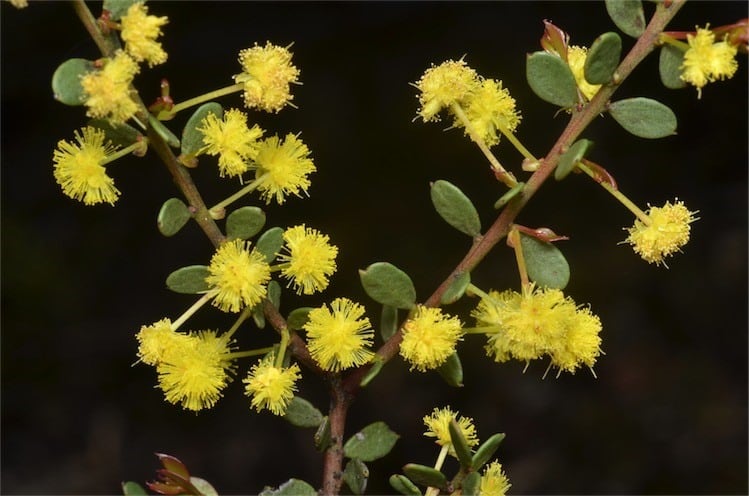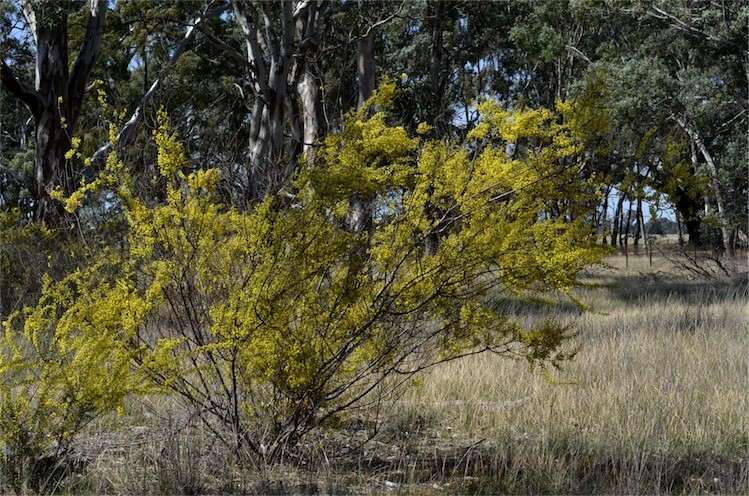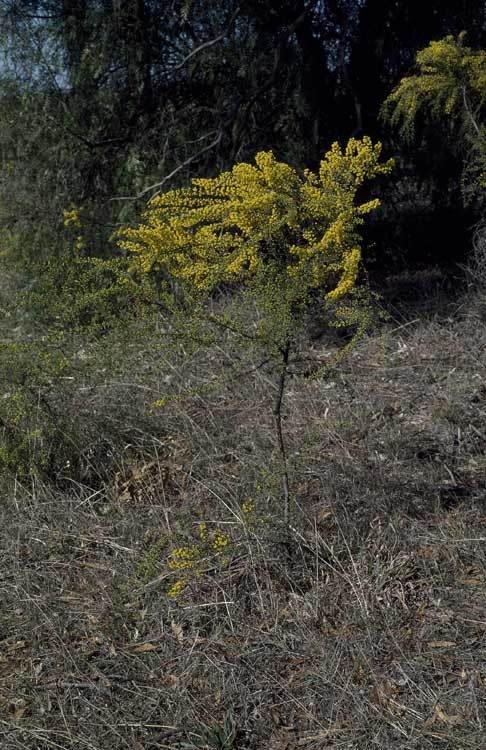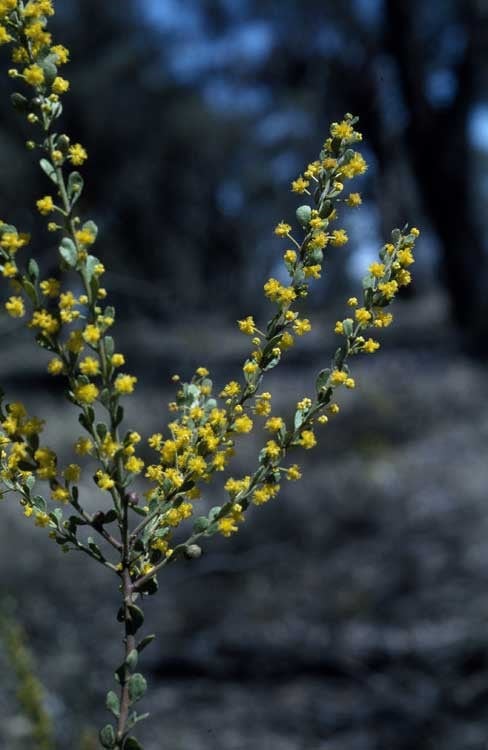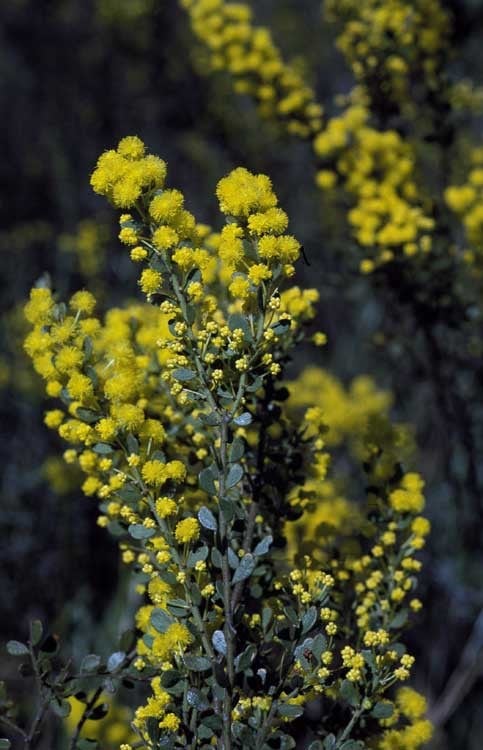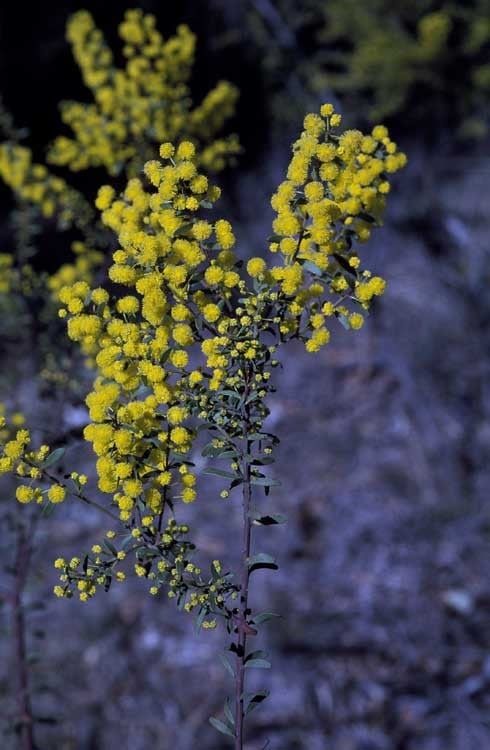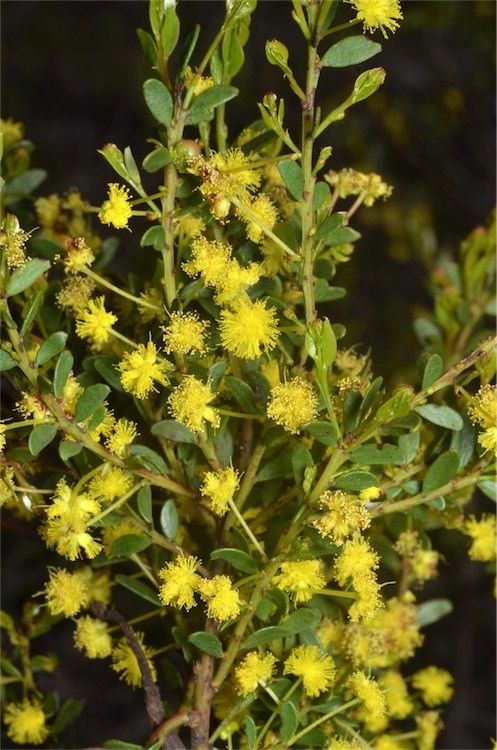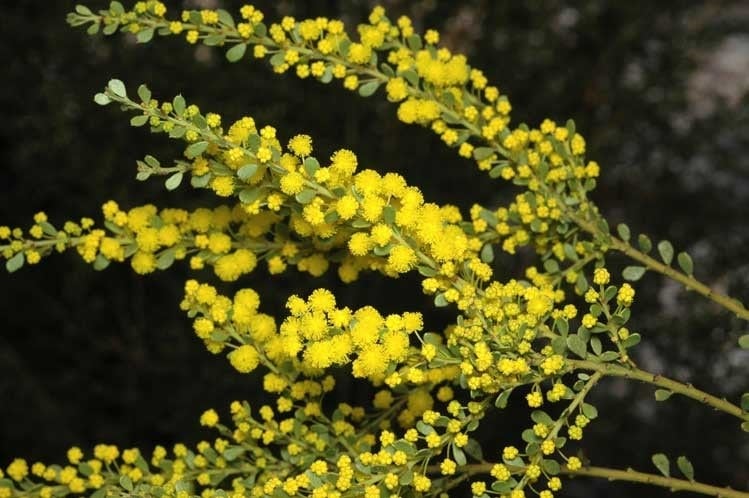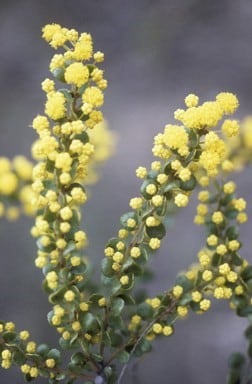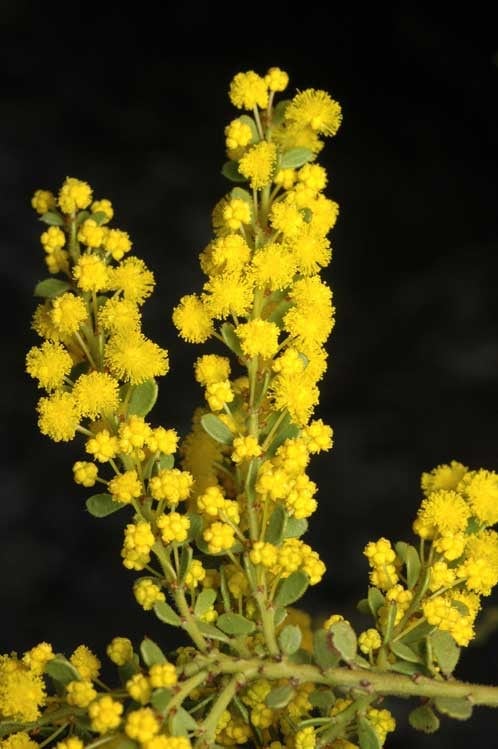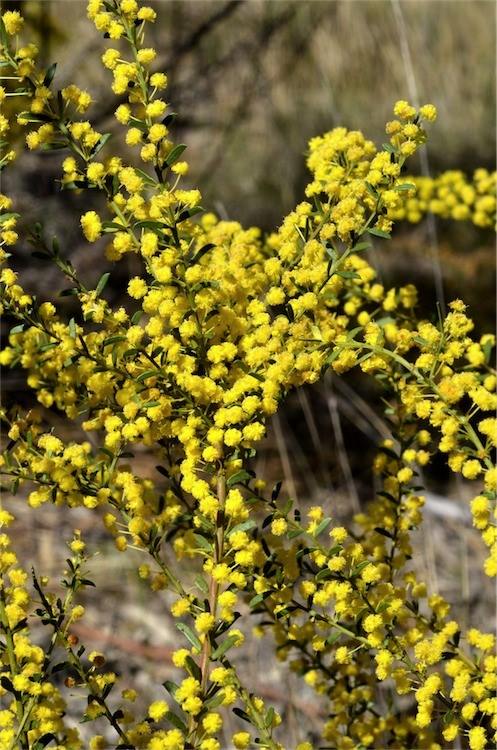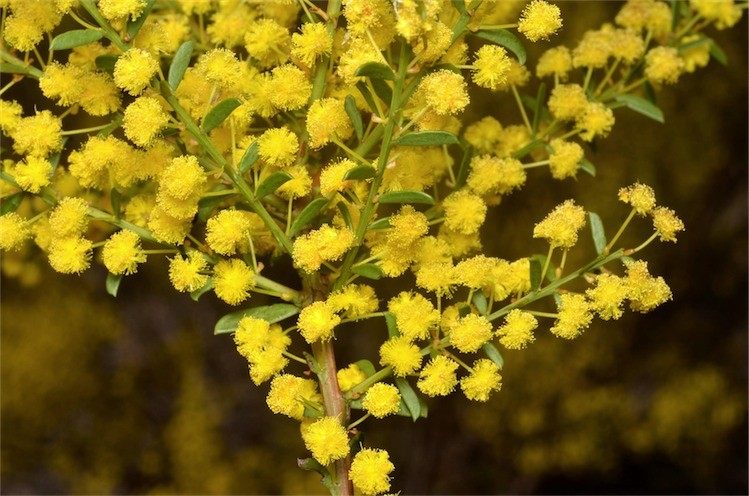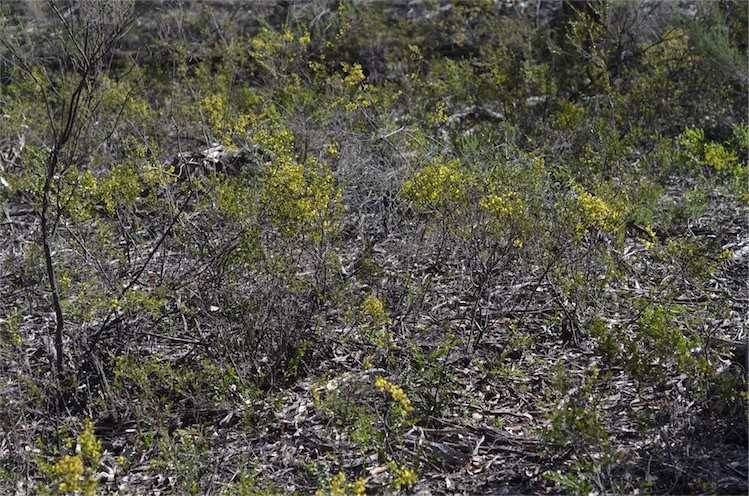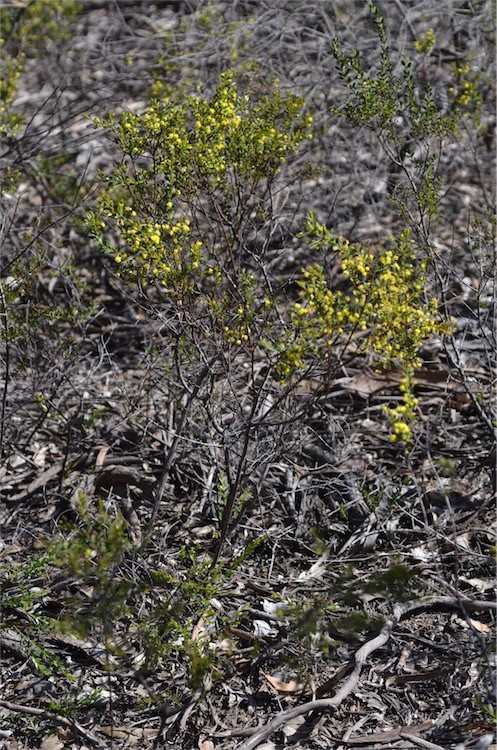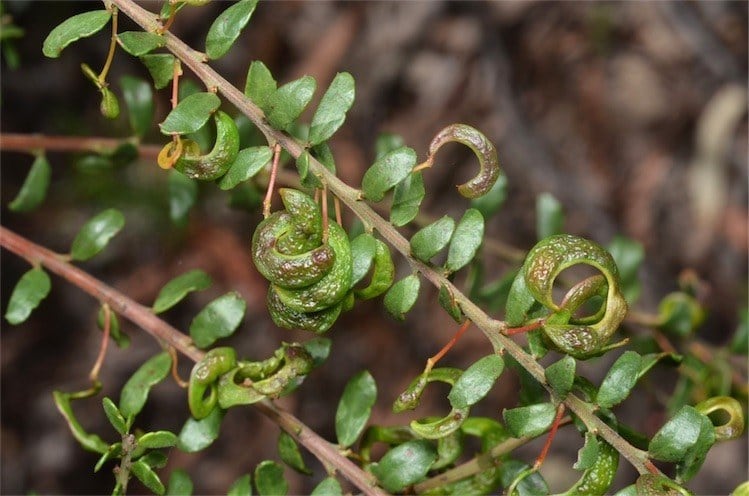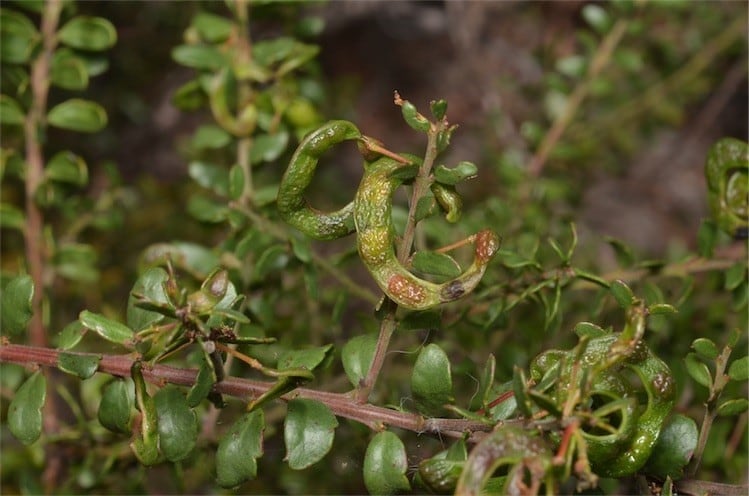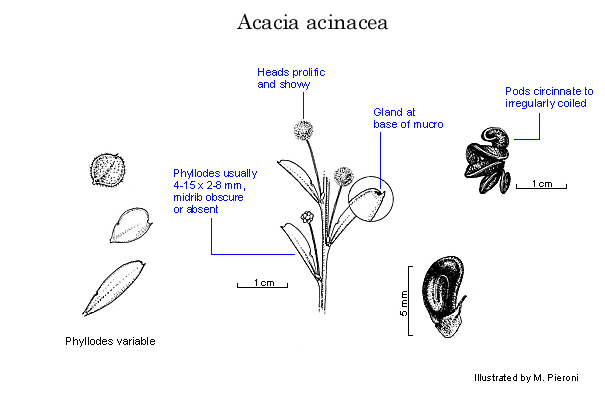Acacia acinacea Lindl.
WATTLE
Acacias of Australia
Common Name
Gold-dust Wattle, Round-leaved Wattle
Family
Fabaceae
Distribution
Widespread in south-eastern Australia from near Melrose, S.A., throughout most of Vic. and N to Eumungerie and Gulgong, N.S.W.
Description
Bushy or straggly open shrub, commonly to c. 2.5 m high. Branchlets somewhat angled at extremities, glabrous or hairy. Phyllodes somewhat asymmetric, narrowly oblong-elliptic, oblanceolate, broadly obovate or circular, usually 4–15 mm long and 2–8 mm wide with l:w = 1–5, ±obtuse and normally excentrically mucronulate, green, glabrous or hairy; midrib obscure or absent; lateral nerves absent; glands 2, adjacent to mucro and near or below middle of phyllode, not prominent. Inflorescences normally 1-headed, rudimentary racemes with axes c. 0.5 mm long, 1 or 2 per axil; peduncles 4–20 mm long, slender, glabrous; heads prolific, globular, 4–4.5 mm diam., 8–20-flowered, golden. Flowers 5-merous; sepals free. Pods circinnate to irregularly twisted or spirally coiled, 3–4.5 mm wide, crustaceous, glabrous. Seeds longitudinal, ±oblong, 4–5 mm long, shiny, dark brown; aril clavate, 1/4–1/2 length of seed.
Habitat
Grows mostly in sand, sandy loam and gravelly soil, in hilly country, in eucalypt woodland, woodland heath and open mallee scrub.
Specimens
S.A.: 5 km S of Monarto, M.E.Lawrence 216 (MEL); c. 8 km W of American R. on road to Kingscote, Kangaroo Is., P.G.Wilson 914 (AD, MEL). N.S.W.: 1 km N of Sutton turn-off on Federal Hwy, M.D.Crisp 2194 (AD, MO, NSW); Goonoo State Forest, H.M.R.Rupp (NSW178696). Vic.: 7.2 km S of Kamarooka, Bendigo District, H.I.Aston 437 (MEL).
Notes
A member of the ‘A. microcarpa group’ most closely related to A. triquetra which normally has uni-glandular phyllodes and straight to slightly curved pods. The few specimens with longer than normal phyllodes (i.e. 15–25 mm) may resemble A. microcarpa which has slightly to prominently curved pods, and obtuse phyllodes with larger glands (0.5 mm long). A variant with larger than normal glands occurs in the North Mount Lofty Ra., S.A. (e.g. B.Copley 5311, AD); it is distinguished from A. microcarpa by smaller phyllodes
(8–16 ´ 2.5–6 mm) which are normally obviously mucronulate; typical A. acinacea also occurs in this same region. Sometimes resembles A. rhetinocarpa. A registered cultivar, ‘Ruby Tips’, is recognized within A. acinacea.
Shape, size and indumentum of the phyllodes are extremely variable and detailed studies are required to elucidate the complex patterns of variation (fide B.R.Maslin, Nuytsia 6: 40–42, 1987, for details). Specimens with ±orbicular phyllodes are sometimes treated as A. cyclophylla (phyllodes hairy on type) or more commonly A. rotundifolia (phyllodes glabrous on type). The entity referred to as A. rotundifolia is often similar to A. glandulicarpa in phyllode shape and size.
FOA Reference
Data derived from Flora of Australia Volumes 11A (2001), 11B (2001) and 12 (1998), products of ABRS, ©Commonwealth of Australia
Author
B.R.Maslin
Minor edits by B.R.Maslin
This identification key and fact sheets are available as a mobile application:
URL: https://apps.lucidcentral.org/wattle/
© Copyright 2018. All rights reserved.
